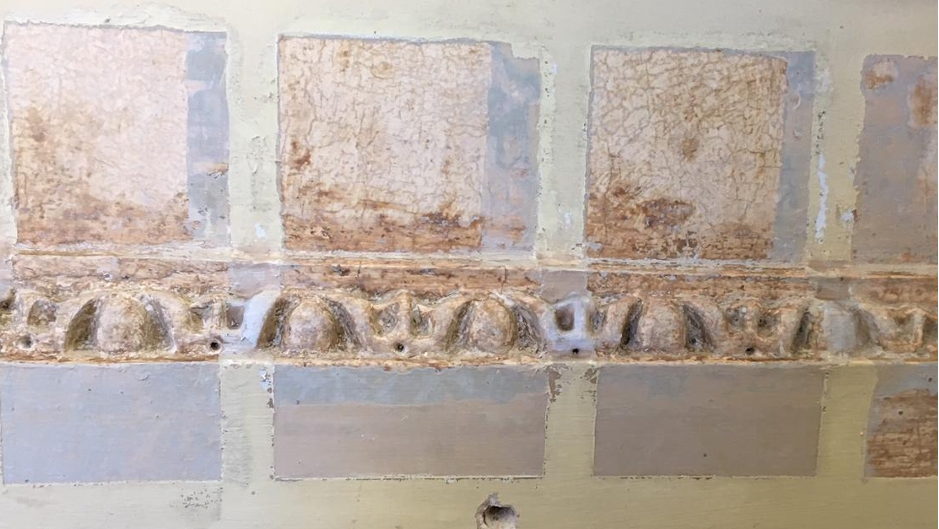Blenheim Palace Chapel
We were commissioned to investigate the development of the historic decorative schemes of the Chapel at Grade I listed Blenheim Palace to inform redecoration.
The Chapel at Blenheim Palace forms part of the East wing of Grade I listed building. It was constructed between 1705-31 under instruction of the famous English Baroque architect John Vanbrugh.
We were commissioned to provide a historic interpretation and chronology of previous paint schemes. We focused in particular on the wainscot and reredos to see if a historic painted decorative scheme could be identified, as seen in a photograph from the 1880s. The painted surfaces also exhibited areas of microbiological growth, delamination, cracks and loss of paint due to deterioration or damage to the underlying plaster substrate. As such, the aim of the survey was also to assess the extent of the defects, to comment on the overall stability of the paint layers and possible causes of the defects to inform on recommendations for preparation and appropriate techniques for redecoration of the chapel.
How did we carry this out?
- On-site investigations, including the removal of paint samples
- Conducting cross sectional and material analysis in the lab
- Uncovering areas on-site to expose historic paint layers and decorative finishes
- Carrying out paint removal trials to assess the efficacy of removal techniques and materials
- Undertaking archival research to place the findings from the material evidence within the historical context of the building
The building of Blenheim Palace is itself is a complicated and fascinating subject, beset with difficulties, delays and with the involvement of numerous architects, craftsmen and builders. The Chapel was one of the last areas of Blenheim Palace to be completed and suffered a fairly piecemeal construction and therefore paint analysis can be a very valuable tool to help understand the history of the space.





